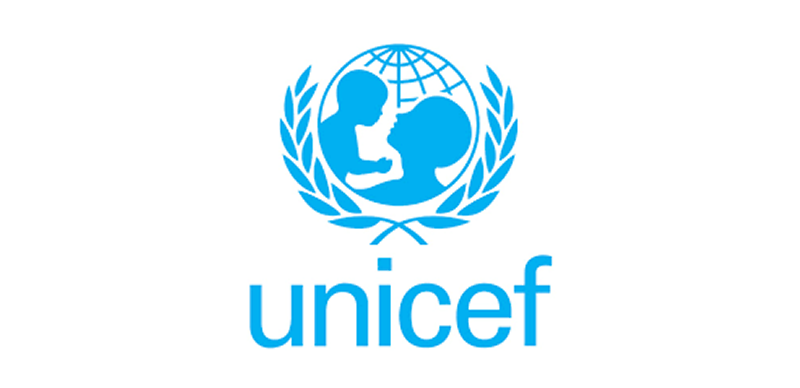443
By Oscar Okhifo
More than 14.3 million children worldwide have not received a single dose of any vaccine, according to a joint report released Tuesday by the World Health Organization (WHO) and the United Nations Children’s Fund (UNICEF), highlighting a serious global immunization gap that threatens decades of progress.
The figure marks an increase of 1.4 million compared to 2019, and overshoots the 2024 target by four million children, jeopardizing the world’s ability to meet the Immunization Agenda 2030 goals.
According to the report, about 115 million infants, 89 per cent, received at least one dose of the diphtheria, tetanus, and pertussis (DTP)-containing vaccine in 2024. Roughly 109 million children, 85 per cent, completed the full three-dose series.
While the above indicates modest progress, the report warns that nearly 20 million infants missed at least one DTP dose last year, with 14.3 million remaining entirely unvaccinated, classified as “zero-dose” children.
WHO Director-General, Dr. Tedros Adhanom Ghebreyesus, stressed the life-saving value of vaccines, but warned of growing threats to immunization gains.
“Vaccines save lives, allowing individuals, families, communities, economies and nations to flourish. It’s encouraging to see continued progress, although we still have a lot of work to do,” he said.
“Drastic cuts in aid, coupled with misinformation about the safety of vaccines, threaten to unwind decades of progress.”
Children remain un- or under-vaccinated for several reasons, including limited access to healthcare services, vaccine supply disruptions, armed conflict, instability, and growing vaccine hesitancy.
The report analyzed data from 195 countries, revealing that while 131 nations consistently reach 90 per cent coverage for the first DTP dose, only 17 countries with less than 90 per cent coverage in 2019 have improved in the last five years.
Conversely, 47 countries are either stagnating or regressing, including 22 that once surpassed 90 per cent but have since declined.
Conflict zones are a particular concern. Although only 26 countries fall into this category, they account for half of all zero-dose children globally.
The number of unvaccinated children in these settings has grown from 3.6 million in 2019 to 5.4 million in 2024.
On a brighter note, immunization coverage in 57 low-income countries supported by Gavi, the Vaccine Alliance, has improved, reducing the number of un- and under-vaccinated children by about 650,000.
However, slight declines are being recorded in some upper-middle- and high-income countries that had previously maintained over 90 per cent coverage, a shift the report warns could increase the risk of outbreaks and seriously strain health systems.
UNICEF Executive Director, Catherine Russell, called for urgent global action.
“We have managed to reach more children with life-saving vaccines. But millions remain unprotected from preventable diseases, and that should worry us all,” she said.
According to her, “Shrinking health budgets, fragile systems, misinformation, and conflict are standing in our way. No child should die from a disease we can prevent.” she declared.
Encouragingly, vaccine introductions and scale-ups continue, especially in Gavi supported countries. A notable gain was recorded in the rollout of the human papillomavirus (HPV) vaccine. Global coverage rose from 17 per cent in 2019 to 31 per cent in 2024, with several countries adopting a single-dose schedule.
Dr. Sania Nishtar, CEO of Gavi, noted: “In 2024, lower-income countries protected more children than ever before, with coverage rates increasing across all Gavi supported vaccines. But population growth, fragility, and conflict present major hurdles. Continued Governments and partners’ commitments are vital to protect the world from infectious disease threats.”
The coverage of measles showed modest gains too. 84 per cent of children receiving the first dose and 76 per cent the second. However, these levels still fall short of the 95 per cent threshold needed to prevent outbreaks.
In 2024 alone, 60 countries experienced large or disruptive measles outbreaks, nearly double the number in 2022.
Despite high public demand for childhood immunization, the report warned that funding shortfalls, rising global instability, and vaccine misinformation are threatening to derail hard-won progress.
The report concluded by emphasizing that “reaching every child with vaccines is not only possible, it is essential,” underscoring that global health security depends on it.
It’s important to stress that in regions like Northern Nigeria, where vaccine misinformation persists, the National Orientation Agency and community based organizations and associations must intensify public education efforts.
Meanwhile, Governments across Nigeria and Africa must urgently address the challenges of conflict zones and hard-to-reach areas to ensure no child is left behind. A healthy childhood is a secured future.



